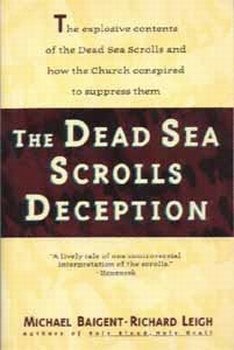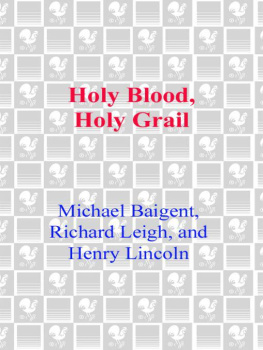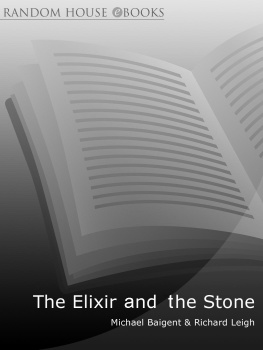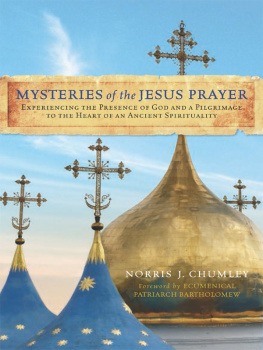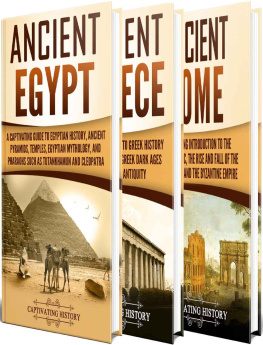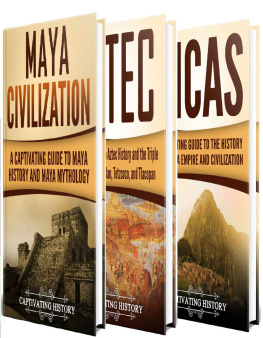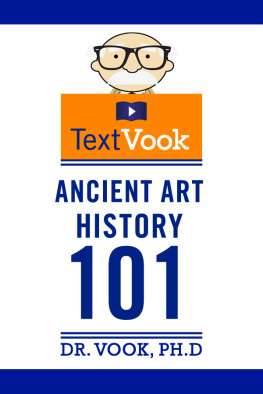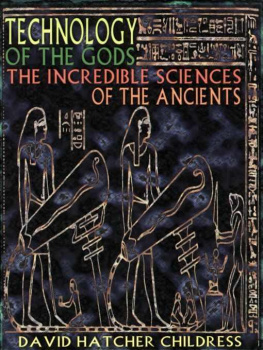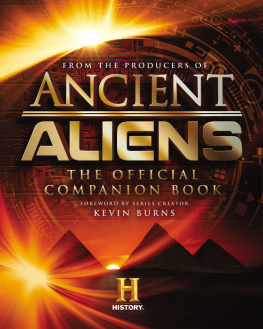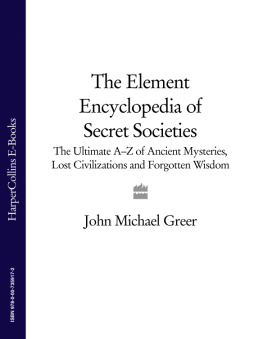Michael Baigent - Ancient Traces: Mysteries in Ancient and Early History
Here you can read online Michael Baigent - Ancient Traces: Mysteries in Ancient and Early History full text of the book (entire story) in english for free. Download pdf and epub, get meaning, cover and reviews about this ebook. year: 1999, publisher: Penguin Books, Limited (UK), genre: Religion. Description of the work, (preface) as well as reviews are available. Best literature library LitArk.com created for fans of good reading and offers a wide selection of genres:
Romance novel
Science fiction
Adventure
Detective
Science
History
Home and family
Prose
Art
Politics
Computer
Non-fiction
Religion
Business
Children
Humor
Choose a favorite category and find really read worthwhile books. Enjoy immersion in the world of imagination, feel the emotions of the characters or learn something new for yourself, make an fascinating discovery.

- Book:Ancient Traces: Mysteries in Ancient and Early History
- Author:
- Publisher:Penguin Books, Limited (UK)
- Genre:
- Year:1999
- Rating:3 / 5
- Favourites:Add to favourites
- Your mark:
- 60
- 1
- 2
- 3
- 4
- 5
Ancient Traces: Mysteries in Ancient and Early History: summary, description and annotation
We offer to read an annotation, description, summary or preface (depends on what the author of the book "Ancient Traces: Mysteries in Ancient and Early History" wrote himself). If you haven't found the necessary information about the book — write in the comments, we will try to find it.
Ancient Traces: Mysteries in Ancient and Early History — read online for free the complete book (whole text) full work
Below is the text of the book, divided by pages. System saving the place of the last page read, allows you to conveniently read the book "Ancient Traces: Mysteries in Ancient and Early History" online for free, without having to search again every time where you left off. Put a bookmark, and you can go to the page where you finished reading at any time.
Font size:
Interval:
Bookmark:
PENGUIN BOOKS
ANCIENT TRACES
Michael Baigent was born in New Zealand in 1948 and obtained a degree in Psychology from Canterbury University, Christchurch. Since 1976 he has lived in England with his wife and children in order to research and write. He was recently awarded an MA in Mysticism and Religious Experience from the University of Kent.
He has also written From the Omens of Babylon and, with Richard Leigh, has co-authored a number of books, including the international bestseller, The Holy Blood and the Holy Grail (with Henry Lincoln), The Dead Sea Scrolls Deception, Secret Germany, The Elixir and the Stone and The Inquisition.
MICHAEL BAIGENT
Mysteries in Ancient and Early History

PENGUIN BOOKS
PENGUIN BOOKS
Published by the Penguin Group
Penguin Books Ltd, 80 Strand, London WC2R 0RL, England
Penguin Putnam Inc., 375 Hudson Street, New York, New York 10014, USA
Penguin Books Australia Ltd, 250 Camberwell Road, Camberwell, Victoria 3124, Australia
Penguin Books Canada Ltd, 10 Alcorn Avenue, Toronto, Ontario, Canada M4V 3B2
Penguin Books India (P) Ltd, 11 Community Centre, Panchsheel Park, New Delhi 110 017, India
Penguin Books (NZ) Ltd, Cnr Rosedale and Airborne Roads, Albany, Auckland, New Zealand
Penguin Books (South Africa) (Pty) Ltd, 24 Sturdee Avenue, Rosebank 2196, South Africa
Penguin Books Ltd, Registered Offices: 80 Strand, London WC2R 0RL, England
www.penguin.com
First published by Viking 1998
Puiblished in Australia under the tide Ancient Histories: A History through Evolution and Magic Published in Penguin Books 1999
Copyright Michael Baigent, 1998
All rights reserved
The moral right of the author has been asserted
Except in the United States of America, this book is sold subject to the condition that it shall not, by way of trade or otherwise, be lent, re-sold, hired out, or otherwise circulated without the publishers prior consent in any form of binding or cover other than that in which it is published and without a similar condition including this condition being imposed on the subsequent purchaser
ISBN: 978-0-14-192835-7
I should first like to thank my stepdaughter, Emma Milne-Watson, for beginning the discussion out of which the idea for this book arose.
I should also like to thank my wife, Jane, for her interest and support during what proved a rather intensive period of writing and research.
My thanks too for the criticisms and comments made by Joseph Addison, Isabelle Baigent, Tansy Baigent, David Milne-Watson, Lawrence Harvey and Carl Sandeman.
I owe further debts to many: Brie Burheman; Ann Evans; Andrew Nurnberg; Tony Lacey; and my long-time colleague, Richard Leigh.
Finally, I owe much to the efficiency of the staff of the British Library Reading Room at Bloomsbury (alas, now dragged to the wasteland of St Pancras), the Bodleian Library and the Ashmolean Library.
Picture Credits
I would like to thank the following for their kind permission to reproduce material: Professor Naama Goren-Inbar for are my own.
The map on is reproduced from Admiralty chart 4103 by permission of the Controller of Her Majestys Stationery Office and the hydrographic offices of France and the United Kingdom.
I n the heat of July 1989, Israeli archaeologist Professor Naama Goren-Inbar, together with her colleagues, began to excavate in the northern Jordan valley. Their site was very ancient, around 500,000 years old, and very waterlogged, for it lay close to the Jordan river.
They would have begun just after sunrise and, with considerable relief, stopped for the day at noon, just as the sun finally stole away all their shadows. Security considerations cannot have been far from their minds as they worked; the Jordan was the front line during the years of hot peace, and occasionally there were problems.
They decided first to expose all the geological levels: a mechanical digger was employed to excavate slowly two deep trenches across part of the site. As each bucketload of earth was brought to the surface it was emptied and its contents examined for bones or artefacts.
One morning, to the archaeologists amazement, the digger dredged up part of a well-constructed and highly polished wooden plank. Nothing like it had ever been found before.
The plank was of willow wood, almost ten inches long and just over five inches wide. It had a very flat, very smooth, artificially polished surface which had been so expertly prepared that no trace of any tool marks remained. Furthermore, one edge was completely straight and deliberately bevelled. Underneath the plank the wood
According to current archaeological thinking, no one living 500,000 years ago had any need for straight, flat and polished wooden planks. Of what possible use would one be to a lifestyle which was devoid of straight edges and flat surfaces? Cavemen, we are told, did not use rulers and set-squares.
Nevertheless, this plank was found. It had been made with considerable care, effort and skill. We must conclude, therefore, that a need for it had existed at the time. But what might this have been? Professor Goren-Inbar was perplexed; she had no explanation for it.
Together with her colleagues, she could only conclude that the technical capabilities of these ancient people had been seriously underestimated. And, she added, there may well be further unconventional finds of this type. Finds which may force a revision of opinion regarding the sophistication of early human society.
We can see that our comfortable picture of ignorant and brutish cavemen, set far distant from our modern world not only in time but in intelligence and capability, is suddenly in serious danger of being exposed as a deception. This find does not just provide solid evidence of an unexpected level of skill and technical prowess but it also constitutes evidence of an unexpected social and mental development in other words, it shows that at least some inhabitants of this long-lost epoch possessed minds which could visualize and actualize elegantly constructed objects which we normally associate with a more modern world.
This well-worked plank needs a context: it seems to whisper unobtrusively but insistently to all who will listen carefully, civilization. But of cavemen?
This raises one possible explanation which the archaeologists did not advance, perhaps because it simply did not occur to them, or perhaps because its implications were just too wild. This plank may have been intrusive. Not in the sense of deriving from a later period, but culturally intrusive. Could the primitive humans at this Jordan valley site have obtained the plank elsewhere, from some other, more advanced, more technically accomplished group who had made and used it?
It seems probable that, in time, the very existence of this plank will force us to rewrite our ancient history. But until then it is likely that this extraordinary discovery will be ignored or, at least, marginalized to the extent that it ceases to pose any threat to the standard story of our past.
The unfortunate truth we need to confront is that history can be rather like statistics: anything can be proved; any fraudulent story of the past can be maintained so long as all unwelcome data is excluded. As we will discover during the course of this book, certain stories about human prehistory have so much money and so many reputations vested in them that they are stubbornly maintained even in the face of steadily accumulating contrary evidence. To the extent, in fact, of supporters taking every opportunity to shout louder and more often than their opponents. Which does not, of course, help towards any search for the truth.
Font size:
Interval:
Bookmark:
Similar books «Ancient Traces: Mysteries in Ancient and Early History»
Look at similar books to Ancient Traces: Mysteries in Ancient and Early History. We have selected literature similar in name and meaning in the hope of providing readers with more options to find new, interesting, not yet read works.
Discussion, reviews of the book Ancient Traces: Mysteries in Ancient and Early History and just readers' own opinions. Leave your comments, write what you think about the work, its meaning or the main characters. Specify what exactly you liked and what you didn't like, and why you think so.

